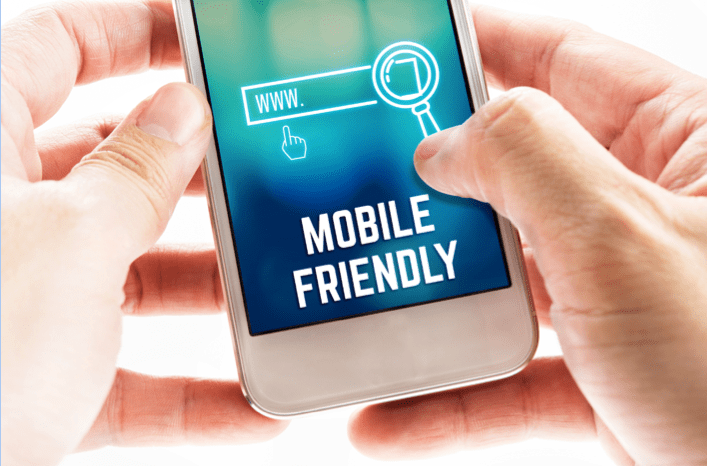
Hello and welcome to a video on building a great mobile experience. The idea of designing for mobile comes with its own set of unique challenges. In the following video, we’ll be covering how to think about building a great mobile experience. But before we get into the nuts and bolts, here are two reasons why you should build a great mobile experience:
Why a great mobile experience is important
A great mobile experience is important for a number of reasons. First, mobile devices are becoming the primary way that people access the internet. This means that if your website does not have a good mobile experience, you are likely to lose out on a lot of potential traffic. Second, a good mobile experience can help to improve your search engine rankings. This is because Google and other search engines are now taking into account the mobile-friendliness of websites when determining their rankings. Finally, a good mobile experience can simply make your website more enjoyable to use for everyone.
Building a great mobile experience for your website does not have to be difficult or expensive. There are a number of simple things that you can do to improve the mobile experience for your visitors. For example, you can ensure that your website is responsive, which means that it will automatically adjust to fit the screen size of any device. You can also make sure that your content is easy to read and navigate on a smaller screen. If you take care of these basics, you will be well on your way to providing an excellent mobile experience for your visitors.
What’s the difference between responsive and adaptive design?
As mobile devices become more and more popular, it’s important to make sure your website is designed in a way that will provide the best experience for users no matter what device they’re using. There are two main ways to do this: responsive and adaptive design.
Responsive design is the most common approach. With responsive design, your website will automatically adjust to fit the screen size of the device it’s being viewed on. This means that your website will always look its best, no matter what device it’s being viewed on.
Adaptive design is a bit more complex. With adaptive design, you create different versions of your website specifically for different devices. So, you might have one version of your website that’s designed specifically for smartphones, and another version that’s designed specifically for tablets. This can be a bit more time-consuming than responsive design, but it can also provide a better experience for users since you can tailor the design specifically for each type of device.
Kinds of breakpoints and how we use them in our design
There are four main types of breakpoints that we use in our design: width, height, device-width, and device-height. Each one corresponds to a different aspect of the user’s experience.
Width breakpoints are used to determine how wide the content should be on different screen sizes. We generally start with a base width of 320px and then scale up or down from there based on the width of the device.
Height breakpoints are used to determine how tall the content should be on different screen sizes. We generally start with a base height of 480px and then scale up or down from there based on the height of the device.
Device-width breakpoints are used to optimize the experience for different devices. For example, we might have a separate set of breakpoints for iPhones and iPads.
Device-height breakpoints are used to optimize the experience for different devices. For example, we might have a separate set of breakpoints for iPhones and iPads.
Planning for accessibility with just one click
If you’re planning to build a great mobile experience, one of the most important things to consider is accessibility. After all, according to a report from eMarketer, there are now more than 1.4 billion people worldwide who are using smartphones.
That means that if you want your site or app to be successful, it needs to be accessible to as many people as possible. One way to make sure that happens is to plan for accessibility from the start.
Here are a few tips on how to do that:
1. Make sure your site or app can be used with just one click.
2. Simplify your design so that it’s easy to use on a small screen.
3. Use clear and concise text that can be easily read on a mobile device.
4. Include alt text for images so that people with vision impairments can still access your content.
5. Use large buttons and links so that they can be easily clicked on a touch screen.
6. Test your site or app on multiple devices to make sure it works well on all of them.
By following these tips, you can make sure that your site or app is accessible
Planning for web vs. native
There’s a lot to think about when you’re planning your mobile experience. One of the first decisions you’ll need to make is whether to build a web app or a native app.
Native apps are built specifically for each platform and can take advantage of all the device’s features. They’re usually faster and more responsive than web apps, but they’re also more expensive to develop.
Web apps are written in HTML, CSS, and JavaScript and can be accessed through a web browser on any device. They’re less expensive to develop than native apps, but they’re not always as fast or responsive.
So which one is right for you? It depends on your budget, your timeline, and your goals. If you want to create a fast, responsive experience that takes advantage of all the latest features, a native app is probably the way to go. If you’re working with a limited budget and timeline, a web app might be the better choice.
Conclusion
Building a great mobile experience is essential if you want to stay ahead of the competition. With more and more people using their mobile devices to access the internet, it’s important that you make sure your website or app is optimized for these users. By doing so, you’ll be able to keep them coming back for more, which can only mean good things for your business. So what are you waiting for? Get started today and see how you can improve your mobile experience!



